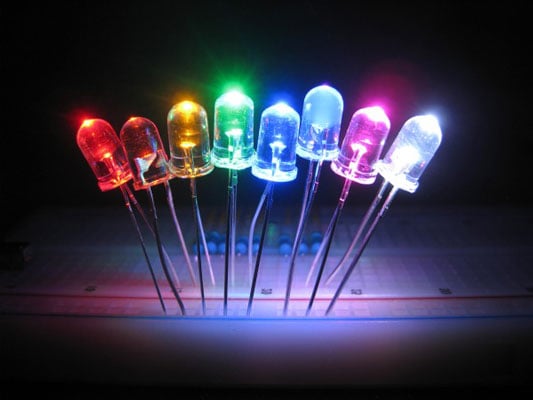Illuminating the Path: A Comprehensive Guide to LED Truck Light Bars

Illuminating the Path: A Comprehensive Guide to LED Truck Light Bars
In the dynamic world of trucking, where visibility, safety, and functionality are paramount, the LED truck lights bar has emerged as an indispensable accessory. Far more than just an aesthetic upgrade, these powerful auxiliary lighting systems transform night into day, enhancing situational awareness for off-road enthusiasts, professional drivers, and work truck operators alike. From navigating challenging terrains to illuminating a worksite, an LED light bar provides a level of illumination that traditional headlights simply cannot match, making it a critical investment in both safety and productivity. This guide will delve deep into everything you need to know about LED truck light bars, from their underlying technology to choosing, installing, and maintaining the perfect bar for your needs.
Understanding LED Truck Light Bars: More Than Just Brightness
At its core, an LED truck light bar is a collection of individual Light Emitting Diodes (LEDs) encased within a durable, often weather-resistant housing, designed to project a powerful beam of light. Unlike conventional incandescent or halogen bulbs that produce light by heating a filament, LEDs generate light through a semiconductor process, making them incredibly efficient and long-lasting.
Each light bar typically consists of multiple LED chips arranged in a row (or multiple rows), each paired with an optical lens designed to shape the light beam. Key components include:
- LED Chips: The heart of the light bar, responsible for light production. Quality varies significantly among manufacturers.
- Housing: Usually made from robust aluminum alloy, designed to dissipate heat (acting as a heatsink) and protect internal components from the elements.
- Lenses/Optics: Precisely engineered to control the beam pattern (spot, flood, or combo).
- Mounting Brackets: Essential for secure attachment to the vehicle.
- Wiring Harness: Includes relays, fuses, and switches for safe electrical connection.
When evaluating a light bar, several metrics are crucial:
- Lumens: A measure of the total amount of visible light emitted. While higher lumens generally mean brighter, efficiency and beam pattern play a larger role in perceived brightness.
- Watts: The electrical power consumed. A higher wattage doesn’t always equate to more light; efficient LEDs produce more lumens per watt.
- Beam Patterns:
- Spot: A narrow, focused beam designed for long-distance illumination. Ideal for seeing far ahead on trails or open roads.
- Flood: A wide, diffused beam that illuminates a broad area close to the vehicle. Excellent for work sites or navigating tight turns.
- Combo: Combines both spot and flood patterns, offering the best of both worlds with a long-distance center beam and wide peripheral lighting.
- IP Rating (Ingress Protection): Indicates the bar’s resistance to dust and water. IP67 (dust tight, submersible up to 1m for 30 min) and IP68 (dust tight, continuous immersion) are common for quality light bars.
- Color Temperature: Measured in Kelvin (K), typically ranging from 5000K to 6500K for most white LED light bars, mimicking natural daylight.
The Unrivaled Benefits of LED Light Bars for Trucks
The widespread adoption of LED truck light bars is not without reason. They offer a host of advantages over traditional lighting solutions:
- Superior Illumination: LEDs provide a significantly brighter, crisper, and more uniform light output compared to halogen or even HID lights. This translates to vastly improved visibility, allowing drivers to spot obstacles, wildlife, or hazards much earlier.
- Exceptional Energy Efficiency: LEDs consume far less power than conventional bulbs, reducing strain on your truck’s electrical system and potentially improving fuel efficiency by lowering alternator load. This also means less risk of draining your battery during prolonged use.
- Unmatched Durability and Longevity: Built to withstand harsh conditions, LED light bars are typically shockproof, vibration-resistant, and highly resistant to dust and water thanks to their robust construction and high IP ratings. Their lifespan can extend to 50,000 hours or more, far outlasting traditional bulbs.
- Instant On/Off: Unlike HIDs that require a warm-up period, LEDs provide instant full brightness the moment they are switched on, which is critical in situations requiring immediate illumination.
- Versatility: Available in a vast array of sizes, shapes, and beam patterns, LED light bars can be mounted in various locations (bumper, grille, roof, A-pillar) to suit diverse needs, from hardcore off-roading to professional work applications.
- Low Heat Emission: While LEDs do produce some heat, it’s significantly less than traditional bulbs, reducing the risk of heat-related damage to surrounding components. The integrated heatsinks efficiently manage thermal output.
Choosing the Right LED Truck Light Bar: A Buyer’s Guide
Selecting the perfect LED light bar requires careful consideration of your specific needs and truck’s characteristics.
-
Define Your Primary Application:
- Off-Roading: Prioritize a combo beam for varied terrain, high IP rating, and robust construction.
- Work Truck/Job Site: A flood beam or combo beam is ideal for illuminating a broad work area. Durability and ease of wiring are key.
- Highway Driving (Auxiliary): A spot or combo beam for extended forward visibility, but always check local laws regarding on-road use.
- Aesthetics/Show: Focus on design, perhaps a curved bar or RGB color-changing options, while still maintaining quality.
-
Determine Size and Mounting Location:
- Bumper/Grille Mount: Common for 12-inch to 32-inch bars. Offers protection and a clean look. Measure available space carefully.
- Roof Mount: Ideal for larger bars (30-inch to 52-inch) providing maximum forward and peripheral visibility. Be aware of potential wind noise and increased vehicle height. Requires specific roof mounts.
- A-Pillar/Ditch Lights: Smaller pods or mini-bars for side illumination, useful for tight trails or backing up.
-
Select the Appropriate Beam Pattern:
- Spot: For long-range vision (e.g., open desert, high-speed trails).
- Flood: For wide-area illumination (e.g., navigating dense woods, work sites).
- Combo: The most versatile, offering a balance of distance and spread. Highly recommended for general use.
-
Evaluate Lumens and Watts: Don’t get fixated on raw lumen numbers alone. A well-designed light bar with efficient LEDs and optics can outperform a higher-lumen, poorly designed competitor. Look for reputable brands that provide realistic specifications.
-
Check IP Rating: For any outdoor use, an IP67 or IP68 rating is essential to protect against dust, dirt, rain, snow, and even submersion.
-
Assess Construction Quality: Look for thick, cast aluminum housing for better heat dissipation and durability. Polycarbonate lenses are preferred for their impact resistance over glass. Ensure high-quality connectors and seals.
-
Consider Brand Reputation and Warranty: Research user reviews and choose brands known for quality, reliability, and good customer support. A strong warranty indicates manufacturer confidence in their product.
Installation Guide: Lighting Up Your Truck Safely and Effectively
Installing an LED light bar can be a DIY project, but it requires careful attention to detail and electrical safety. If unsure, consult a professional.
Pre-Installation Checklist:
- Tools: Wrench set, socket set, wire strippers, crimpers, multimeter, drill (if needed).
- Parts: Light bar, mounting brackets, wiring harness (usually included), extra wire, heat shrink tubing, zip ties, dielectric grease.
- Safety: Disconnect your truck’s negative battery terminal before starting any electrical work.
Mounting Options & Steps:
- Choose Mounting Location: Bumper, grille, roof, or A-pillar. Each requires specific brackets.
- Attach Brackets: Securely bolt the light bar’s mounting brackets to the chosen location on your truck. Ensure they are level and stable.
- Mount Light Bar: Attach the light bar to the brackets. Do not fully tighten yet, as you’ll need to adjust the aim later.
Wiring Essentials (Crucial for Safety and Performance):
-
Power (Positive) Wire:
- Connect the positive wire from the light bar’s harness to the relay.
- The relay’s output then connects to a fuse holder, and from the fuse holder directly to your truck’s positive battery terminal.
- Use appropriate gauge wire for the length and amperage draw of your light bar (refer to a wiring chart or the light bar’s instructions).
- A relay is essential to prevent high current from going through your switch and potentially damaging your truck’s electrical system.
-
Ground (Negative) Wire: Connect the negative wire from the light bar’s harness directly to a good chassis ground point on your truck (e.g., a bare metal bolt on the frame) or directly to the negative battery terminal. Ensure a clean, secure connection.
-
Switch Wire:
- The relay needs a trigger wire from a switch. Run the switch wire from the relay into your truck’s cabin.
- Connect this wire to a 12V power source that is either always on or ignition-switched (depending on your preference).
- Connect the other side of the switch to a good ground.
- Mount the switch in an accessible and safe location on your dashboard.
-
Secure Wiring: Use zip ties to neatly route and secure all wiring, keeping it away from moving parts, hot components, and sharp edges. Use heat shrink tubing or electrical tape for all connections to protect them from moisture and corrosion.
Testing and Aiming:
- Reconnect the negative battery terminal.
- Turn on the light bar to test its functionality.
- With the light bar on, adjust its angle to achieve the desired beam pattern and coverage. Aim it slightly down to avoid blinding oncoming traffic (if using on private property or off-road).
- Once aimed, fully tighten all mounting bolts.
Legal Considerations: Always check your local and state laws regarding auxiliary lighting. In many areas, it is illegal to use auxiliary lights on public roads, especially those that exceed a certain brightness or are not covered when not in use.
Maintenance and Troubleshooting Your LED Light Bar
While LED light bars are durable, a little maintenance goes a long way:
- Regular Cleaning: Keep the lens clean from dirt, mud, and bug splatter for optimal light output. Use a soft cloth and mild soap.
- Inspect Wiring: Periodically check all wiring connections for corrosion, fraying, or loose terminals. Re-apply dielectric grease to connections.
- Check Mounting Hardware: Ensure all bolts and brackets are tight and free from rust.
Common Troubleshooting:
- Light Bar Not Turning On:
- Check the fuse: A blown fuse is a common culprit.
- Check the relay: Listen for a click when the switch is activated. Test relay continuity with a multimeter.
- Check all wiring connections: Ensure they are tight and properly grounded.
- Test the switch: Ensure it’s sending a signal.
- Test power at the light bar: Use a multimeter to confirm 12V is reaching the bar.
- Dimming or Flickering:
- Could indicate a poor ground connection or insufficient power supply (voltage drop).
- Check for loose connections or corroded terminals.
- Ensure proper wire gauge for the current draw.
- Moisture Inside the Lens:
- Indicates a compromised seal. Contact the manufacturer for warranty replacement if it’s a new bar.
- For older bars, you might attempt to re-seal with silicone, but it’s often difficult to fully resolve.
Types and Categories of LED Truck Light Bars
The market offers a diverse range of LED light bars tailored to various preferences and needs:
- Straight Light Bars: The most common and traditional design, offering a sleek, linear appearance.
- Curved Light Bars: Designed to follow the contour of a vehicle’s windshield or bumper, providing a wider, more natural light spread, especially beneficial for roof mounts.
- Single Row Light Bars: Feature a slimmer profile with one row of LEDs, ideal for tight spaces or a more discreet look.
- Dual Row Light Bars: Offer maximum light output with two rows of LEDs, making them bulkier but significantly brighter.
- Slim/Low Profile Light Bars: Compact designs that fit into narrower openings or offer a less obtrusive appearance.
- RGB/Color-Changing Light Bars: Primarily for aesthetic purposes, these bars can change colors, often controlled via a smartphone app. (Not for on-road use).
- Amber/Yellow Light Bars: Designed to cut through fog, dust, and snow more effectively than white light, as the longer wavelength reduces glare.
Price Table: LED Truck Light Bar Overview
| Type/Size (Approx.) | Beam Pattern | Lumens (Approx.) | IP Rating | Common Price Range (USD) | Notes |
|---|---|---|---|---|---|
| 12-inch Single Row | Spot/Flood | 1,500 – 3,000 | IP67/IP68 | $40 – $100 | Compact, often used as ditch lights or small bumper mounts. |
| 20-inch Dual Row | Combo | 5,000 – 10,000 | IP67/IP68 | $80 – $200 | Popular for bumper/grille mounts, good balance of size & power. |
| 32-inch Curved | Combo | 10,000 – 20,000 | IP67/IP68 | $150 – $350 | Excellent for roof mounts, wider spread, follows vehicle contour. |
| 42-inch Straight | Combo | 15,000 – 25,000 | IP67/IP68 | $200 – $450 | High power, often roof-mounted for extensive forward visibility. |
| 50-inch Straight | Combo | 20,000 – 30,000+ | IP67/IP68 | $300 – $600+ | Maximum illumination, typically roof-mounted for serious off-roading. |
Note: Prices are approximate and can vary widely based on brand, LED chip quality (e.g., Cree, Osram), build materials, included wiring harness quality, and retailer. Always compare specifications and read reviews.
Frequently Asked Questions (FAQ) About LED Truck Light Bars
Q1: Are LED light bars legal for street use?
A1: Generally, no. In most jurisdictions, auxiliary off-road lights are illegal for use on public roads. They are typically too bright and can blind oncoming drivers. They should only be used off-road, on private property, or in designated work areas. Always check your local and state laws.
Q2: How do I choose the right size light bar for my truck?
A2: Measure the available space on your bumper, grille, or roof rack where you intend to mount it. Consider your aesthetic preference and the amount of light output you need. Larger bars generally produce more light but require more mounting space.
Q3: What’s the difference between Spot, Flood, and Combo beam patterns?
A3: A Spot beam is narrow and concentrated for long-distance illumination. A Flood beam is wide and diffused for illuminating a broad area close to the vehicle. A Combo beam combines both, offering a mix of long-distance and wide-area lighting, making it the most versatile.
Q4: What do IP67 and IP68 ratings mean?
A4: IP stands for Ingress Protection. The first digit (6) indicates full protection against dust and solid particles. The second digit indicates water resistance: 7 means it can withstand immersion in water up to 1 meter for 30 minutes, while 8 means it can withstand continuous immersion beyond 1 meter. Both are excellent for off-road use.
Q5: Can I install an LED light bar myself?
A5: Yes, with basic tools and some electrical knowledge, many truck owners can install a light bar. However, proper wiring with a relay and fuse is crucial for safety and to prevent damage to your truck’s electrical system. If you’re unsure, it’s best to have a professional install it.
Q6: Do LED light bars drain the truck’s battery?
A6: LEDs are very energy-efficient, so they draw less power than traditional lights. However, any electrical accessory left on when the engine is off will eventually drain the battery. For typical use while the engine is running, a quality LED light bar should not pose a significant drain.
Q7: How long do LED light bars typically last?
A7: High-quality LED light bars are rated for 30,000 to 50,000 hours or more of operation. This translates to many years of use under normal conditions, significantly outlasting halogen or HID bulbs.
Conclusion
The LED truck lights bar is a transformative addition to any truck, offering unparalleled visibility, enhanced safety, and rugged durability. Whether you’re navigating challenging off-road trails, working late into the night, or simply seeking to upgrade your vehicle’s aesthetic and functional capabilities, an LED light bar delivers performance that far exceeds traditional lighting. By understanding the technology, carefully choosing the right bar for your needs, and ensuring proper installation and maintenance, you can unlock the full potential of this powerful accessory, illuminating your path with confidence and clarity for years to come. It’s more than just a light; it’s an investment in a safer, more capable driving experience.


